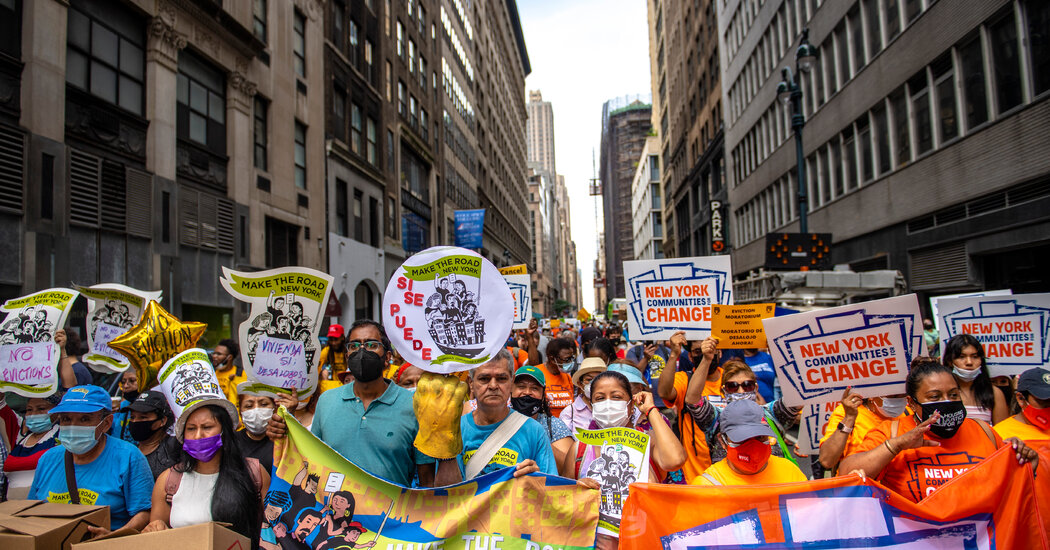
The number of low-income renters at immediate risk of losing shelter remained relatively low in the month since the Supreme Court struck down a national eviction moratorium, as a troubled $46.5 billion federal rental aid program showed signs of kicking into high gear.
The Treasury Department disbursed more than $2.3 billion in rental assistance to about 420,000 households in August, the most of any month since the cash was allocated by Congress over the past two years, according to data released Friday by the department.
That was a significant improvement over the $1.7 billion and $1.5 billion handed out in July and August through the Emergency Rental Assistance Program, bringing the total paid out to around $8 billion, and the number of households helped to over a million.
But the amount is still a fraction of the total available. Biden administration officials are still struggling to speed the flow of the cash, pressuring lagging localities — like Florida, South Carolina and Tennessee — to streamline applications in order to pay landlords as quickly as possible to prevent evictions.
“We’re not satisfied yet, but there is progress,” said Noel Andrés Poyo, a Treasury Department official responsible for overseeing the program.
“Nearly 1.5 million families helped is meaningful progress, but the overall rate of spending emergency rental assistance remains too slow,” said Diane Yentel, president of the National Low Income Housing Coalition, a tenant advocacy group that has worked closely with the White House to prevent evictions. “Some communities are distributing E.R.A. quickly and well, proving that it’s possible, and making those that aren’t all the more glaring and unacceptable.”
The Supreme Court’s decision on Aug. 26 to strike down the national moratorium on evictions transformed a vexing administrative problem into an acute human crisis, placing at least two million renters in immediate danger of eviction, according to one estimate.
So far, the huge tide of evictions many feared has not materialized. Filings in states and cities monitored by Eviction Lab, a nonprofit group that looks at housing court data, have risen modestly in some areas, but remained flat or even declined in others — and remain on balance lower than historical averages.
Gene Sperling, President Biden’s pandemic relief coordinator, said he was heartened — and a little surprised — by the eviction statistics. But he was skeptical of early indicators and was worried the statistics were not picking up thousands of tenants who had “self-evicted,” people who simply abandoned their apartments to avoid the indignity of being thrown out onto the street.
“I’m sure that’s probably too good to be true, but they’re finding it’s not even at half of historical averages,” he said in a conference call with reporters. “Things could get much worse. We might not be picking up a lot of things that are really going on.”
Over the past several months, the White House and Treasury Department have been racing to deal with the program’s problems, repeatedly revising guidelines to allow tenants to receive payouts with a minimum of documentation, while enlisting state judges and even law school students to help tenants delay or prevent their evictions.
Those actions, coupled with the extension of local eviction moratoriums in states like California and New York, have given roughly 50 percent of endangered tenants some kind of protection, Mr. Sperling said.



